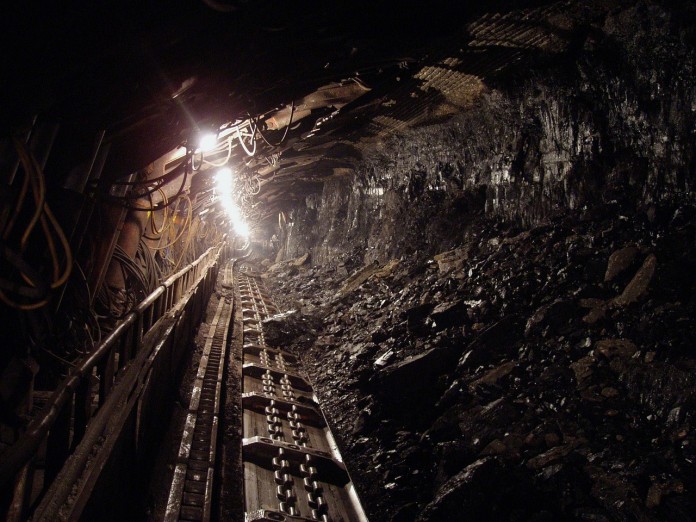CLEVELAND — Cheap shale gas produced by fracking has driven the decline in coal production in the U.S. during the last decade, researchers at the Great Lakes Energy Institute at Case Western Reserve University have found.
Power plants, which use 93 percent of the coal produced nationally, have been operating under the same EPA regulations signed into law by President George H.W. Bush in 1990.
Proposed new rules since then have all been challenged in court and not implemented until June 2016, when the EPA’s restrictions on mercury and other toxic emissions were approved by the U.S. Supreme Court.
Consumption of coal continued to grow under those 1990-era EPA rules until 2008, and then went into steady decline, dropping by 23 percent from 2008 thru 2015.
The data show the drop in those years to be correlated with the shale revolution, as natural gas production increased by a factor of more than 10 and its price dropped in half, the researchers say.
And, due to the continuing — and in some cases accelerating — technological and economic advantages of gas over coal, the decline in coal is expected to continue at least decades into the future. Their study is published in The Electricity Journal.
“Some people attribute the decline in coal-generated electricity to the EPA’s air-quality rules, even calling it ‘Obama’s war on coal,'” said Mingguo Hong, associate professor of electrical engineering and computer science at Case Western Reserve and co-author of the study. “While we can’t say that the EPA rules have no impact — as, for example, discouraging the building of new coal power plants because of the expectation that tougher air-quality rules will clear the courts — the data say the EPA rules have not been the driving force.”
Market competition
Hong, co-director of the Electricity Systems Research Lab at Case Western Reserve, and Walter Culver, a founding member of the Great Lakes Energy Institute Advisory Board at the university, say the data show that shale-gas competition is what’s been hurting coal as of today.
They expect that, as wind and solar sources of electricity continue to improve, they will be tough competitors to coal in the not-distant future. The authors examined data available from the U.S. Energy Information Administration, academia, specialized energy consultants, and Wall Street analysts and publically available information of the electric utilities and gas industry — in some cases down to the profit and loss statements.
“If you’re a power plant operator and you see gas supply is continuing to increase and natural gas can do the job cheaper — by a lot — the decision to switch from coal is pretty easy,” Culver said.
Longterm outlook
“As we look toward the future, we see no natural mechanisms that will permit coal to recover,” Culver said.
Gas supply continues to grow
Starting in 2009, gas production each year has exceeded U.S. Energy Information Administration (EIA) annual projections. And the proved gas reserves are outpacing production exponentially, the researchers note.
Lastly, pipelines out of Appalachia — where the cheapest and most abundant shale gas is found — are expected next year to increase access to gas in that region by 55 percent above recent production.
There is a valid concern that the supply of natural gas will be limited by a recent debilitating drop in prices that has arisen from over-supply, Culver said. In fact, one driller per month has gone bankrupt in 2015 and early 2016.
Price stability
But after reviewing the profit-and-loss statements of gas drillers, the researchers believe that a point of price stability exists where both the drillers can be profitable enough to keep drilling and the price to power plants — particularly for gas from the Marcellus and Utica shale deposits in Appalachia — will still be far lower than coal.
Some analysts suggest that exports of liquefied natural gas (LNG) will drive down the domestic supply and raise prices. But Hong and Culver say shipping costs, to Asian markets in particular and well-positioned regional competitors, are likely to prevent U.S. LNG from competing easily internationally.
That would leave a strong supply here at attractive prices.
Regulations
Beyond gas price, state regulations and generator technologies have been and will continue to be factors in the loss of coal production, they conclude. Since 2010, the cost of utility-scale solar power has declined 68 percent and onshore wind 51 percent, making them close to, or already competitive with coal, the researchers say.
Policies in three-quarters of America’s states encourage the addition of wind and solar as replacements for coal. As costs have dropped, some states are pushing a faster switch to those renewables.
Because wind and solar fail to provide constant power, fill-in energy sources are needed. Until large-scale batteries or other electricity-storage technologies become more practical, gas is the logical choice over coal to augment the grid, Culver says.
Gas plants can be fired up and turned down faster than coal plants, thus lowering costs to consumers and producing less pollution. Forthcoming EPA air-quality regulations may further disadvantage coal, Hong and Culver say.
Burning natural gas, for instance, produces no mercury emissions, half the carbon dioxide of coal and 80 percent less sulfur.











I think this is a chicken and egg thing: did shale gas lead to declining coal plants, or did declining coal plants push shale gas development?